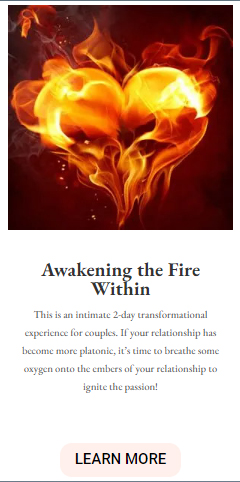Nearly 20 million Americans experience some form of Anxiety Disorder per year. Because so many of the symptoms associated with the Anxiety Disorders present physically, many who suffer with anxiety seek assistance from their physicians. Whether you notice that your heart is beating a little faster than normal, or you can’t seem to get rid of that upset stomach, you may need to address the issues that are creating the physical signs.
There are many ways in which anxiety may present itself. The symptom profiles are described below.
Simple Phobia
- Some folks have fears that are very specific, but unreasonable given the situation. For instance, while many people are afraid of snakes, a person who has a snake phobia may develop an array of symptoms when exposed to even a photo of a snake (palpitations, excessive sweating, clammy palms, hyperventilation, immobilization)
- Treatment for simple phobias may include Systematic Desensitization, a technique through which the individual identifies specific images which elicit anxiety, then prioritizes those images from least anxiety-provoking to most anxiety-provoking. Your therapist then teaches you a variety of relaxation techniques that are used in concert with exposure to these stressful images, from the least stressful to the most stressful. You learn how to relax at each stage, so that when you are exposed to the most-anxiety-provoking image (which may be a real snake or whatever the feared object is), your body no longer generates anxiety.
Social Anxiety Disorder
- Individuals with SAD fear scrutiny and humiliation by others, in the absence of any history of this kind of experience. Typically, individuals who fear that they will act or speak in ways to embarrass themselves avoid social situations as a result. This avoidance may interfere significantly with the person’s normal routine, occupational (academic) functioning, or social activities or relationships, or there is marked distress about having the phobia.
- Cognitive Behavioral Therapy (CBT) offers simple techniques for reducing symptoms and enabling those who suffer with SAD to experience renewed enjoyment of their relationships and social situations.
Post-Traumatic Stress Disorder
- Decades ago, clinicians thought that the only people who experienced PTSD were soldiers returning from war. While this population certainly deserves attention, there are millions of people outside the military who experience symptoms of PTSD following accidents, worksite trauma, and domestic violence, to name a few.
- The symptoms that are most often experienced in PTSD include:
- Response of fear, horror or helplessness during the traumatic event
- Recurrent and intrusive memories of the event
- Recurrent, distressing dreams of the event
- Sense that the event is recurring or being relived
- Intense psychological and physical distress in response to any aspect or memory of the event
- Avoidance of all data associated with the event (physical avoidance, “forgetting” details, loss of interest in daily activities, sense of detachment, emotional shut-down, belief that you won’t live much longer)
- Frequent numbing or dissociation in response to memory or exposure to the event or its details
- Increased physical arousal (insomnia, irritability, difficulty concentrating, hypervigilance, and exaggerated startle response)
- Treatment for PTSD involves identification of the traumatic situation, as well as of the symptoms experienced as a result. Individuals with PTSD often improve when they are able to more openly disclose or journal about the traumatic circumstances. Additional symptom relief may come from relaxation exercises, CBT, medication, group therapy, acupuncture, massage and exercise.
Generalized Anxiety Disorder
- While the anxiety associated with simple and social phobias and PTSD are in response to specific events, objects, or experiences, Generalized Anxiety Disorder presents in a more global, pervasive way. Folks with GAD are often referred to as “worriers” by their friends and families, though the extent to which they worry is typically not rational or logical.
- Symptoms associated with GAD include:
- Excessive worry more days than not, often about a range of issues and concerns
- Restlessness
- Frequent fatigue
- Difficulty concentrating
- Irritability
- Muscle tension
- Sleep disturbance
- The treatment of GAD may include, but is not limited to Relaxation Training, Medication, Psychotherapy, CBT, Acupuncture, Massage and EMDR.
Obsessive-Compulsive Disorder
- While it may be difficult for some of us to accept, there are those that suffer from an anxiety that is frequently relieved by a physical response or activity. Common compulsions which are designed to contain or limit anxiety include physical activities like hand-washing, light switch flipping, counting, tapping, and checking.
- The most successful treatments for OCD include a combination of behavioral therapy and medication. Common treatment protocols include psychotherapy, CBT, Relaxation training, EMDR, Medication and Acupuncture.
Panic Disorder (with / without Agoraphobia)
- When anxiety reaches its most heightened state (panic), our minds often generate irrational beliefs about our ability to manage the situation (“If I don’t leave this store, I’ll die!”). As panic becomes more frequent and more overwhelming, some folks feel less and less capable of leaving their homes. While not all those suffering from Panic Disorder become agoraphobic, those who do often experience additional depression as a result of the increased isolation.
- Panic Disorder can be treated with psychotherapy, Relaxation Training, Behavior Modification, EMDR, and Medication. Many of the medications that effectively reduce the experience of panic are habit-forming, so caution should be used when using this form of treatment.









